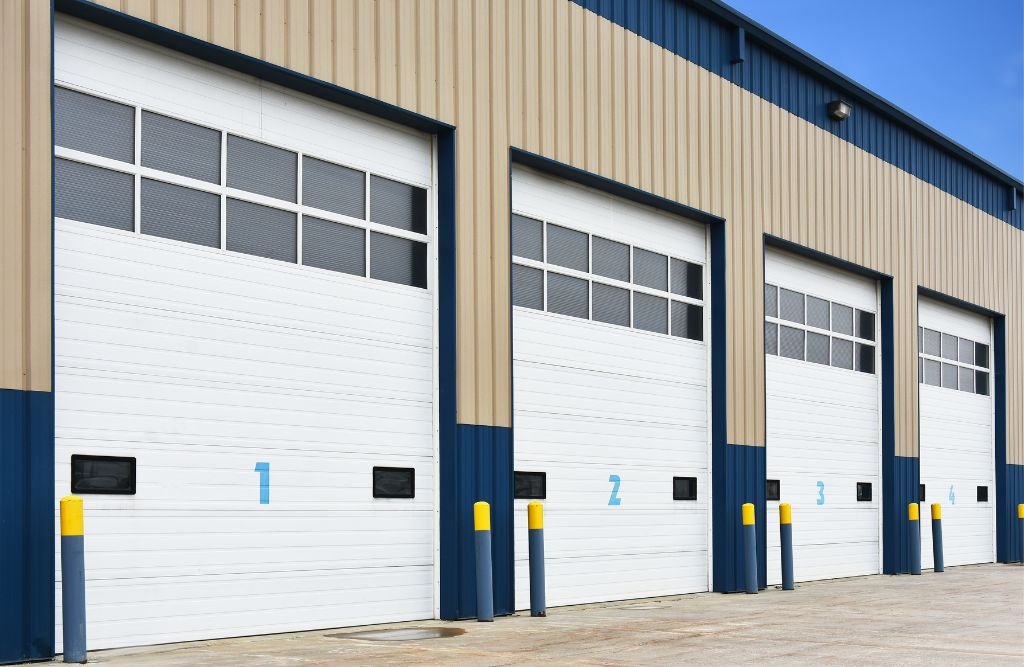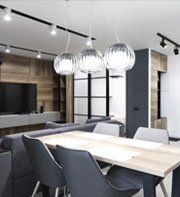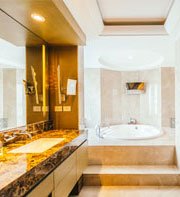Exploring the Stylistic Features and Practical Roles of Industrial Doors

Anyone taking a casual stroll through an industrial setting, or perhaps diving into the heart of warehouse setup, would likely take notice of the substantial doors dotting the structures. Have you ever paused and pondered about the purpose-driven design behind these doors? Or questioned why there exists such an array of choices? Industrial doors may appear to be a mundane subject, but they bear a truly significant role in maintaining an industry operational efficiency, safety, and security.
In today’s blog post, we are aiming to shine a light on the world of industrial doors—their types, functions, and the deciding factors behind choosing the appropriate one. By diving into this realm, we will explore how functionality merges with aesthetics, considering the aspects of security, environmental conditions, and spatial requirements, among others. It’s time to step into the world of industrial doors, comprehend their design, their application, and influence on the architectural world.
Join us as we unravel the mystery behind these gigantesque gates — understand why they play a pivotal role in shaping the industrial landscape and how they contribute towards operational efficiency and workplace aesthetics. This journey will not only illuminate the practicality of each type of door but also highlight the way they echo the ethos of contemporary architecture and design.
The Anatomy of Industrial Doors: Understanding Their Basics
Industrial doors are complex creations with a host of components working in harmony to perform their optimal function. They are designed to perform under intense pressure and extreme environments, which is why their design elements are crafted with meticulous precision.
In essence, they form a protective shell, safeguarding the valuable resources inside. The necessity, coupled with design aesthetics, has paved the way for a plethora of designs and types, each having their unique traits and advantages. From roller shutter doors, sectional overhead doors, to fire rated doors, the variety is extensive, and the choice depends largely on the operation type and scale.
Another critical factor that governs the decision-making process is the installation space available. Just as a Swiss army knife, each door is packed with multiple functionalities, offering different solutions for different industrial requirements. For instance, some might provide high-speed operation for high-traffic areas while some could offer outstanding thermal insulation. The possibilities are as diverse as the doors themselves.
Probing the Varieties: Sectional Overhead Doors, and More
Sectional overhead doors are among the most deployed doors in various industrial environments, credited to their high insulation properties and exceptional sealing. Most importantly, they come with the flexibility of being customizable in terms of dimensions, which ensures a perfect fit for almost any industrial opening. And then we have roller shutter doors, praised for their space-saving design and ease of operation.
Why limit us? Consider high-speed doors, designed for rapid opening and closing, perfect for an industry with high vehicular traffic. Then, folding doors offer compact, space-saving features while maintaining a great level of robustness. To add to this list, fire-rated doors make a reliable defines against potential fire hazards, offering rated fire resistance to prevent the spread of fire within an industrial space, thus ensuring safety.
Each of these types boasts distinct features, ensuring they are tailor-suited to a variety of industrial applications. From storage warehouses that require high insulation properties to manufacturing units aiming to achieve quick in-and-out movements, the choice of door holds great significance.
Pros and Cons: Weighing Your Industrial Door Options
Analysing pros and cons is crucial before any such architectural decision – because choices aren’t made in a vacuum. Each type fulfils different operational requirements and possesses its advantages and shortcomings.
Sectional overhead doors, with their superior insulation and customization factor, are perfect matches for buildings that require constant temperature maintenance—but bear in mind the cost factor associated with these customizable models. Roller shutter doors save major floor space, but their insulation properties aren’t as impressive as the sectional type.
High-speed doors undoubtedly enhance work efficiency but are quite maintenance intensive. Their speed-governing mechanization being delicate may require periodic check-ups, raising the total cost of ownership. The defensive nature of fire-rated doors makes them instrumental in industries that deal with flammable elements—but they aren’t the most aesthetically pleasing.
These pros and cons must be analysed holistically to make an informed decision, ensuring the chosen door hits the mark on operational efficiency, safety, and even aesthetics.
Reflecting Upon Aesthetic Considerations and Security Features
Industrial doors are more than just functional components—they also contribute to the visual appeal and design language of the building. c come in various shades and finishes, allowing them to blend seamlessly with the architectural language.
In terms of security features, doors have evolved remarkably. With advancements in technology, industrial doors are equipped with enhanced lock systems and can even be automated. Some advanced models can be controlled remotely, reinforcing the security perimeter around the premises.
Embracing Technological Innovations in Industrial Doors
Innovation has propelled the evolution of industrial doors. Mechanization and automation have resulted in doors that not only perform better but also prove beneficial in terms of time and energy efficiency.
Models with inbuilt sensors, which open and close based on the proximity of vehicles or personnel, save crucial time while enhancing safety measures. Remote-controlled doors add a layer of ease and convenience. Doors with enhanced insulating materials contribute to energy efficiency. These advancements echo the commitment towards enhancing functionality, augmenting security, and increasing energy efficiency.
As Doors Close…
As we draw the curtains on our exploration, it becomes intriguingly evident how aspects of functionality, design, and of course, safety gets factored into the creation of industrial doors. Each variant, from sectional overhead doors to fire-rated ones, is devised to cater to a distinct set of industrial requirements and safety norms.
Choosing the right industrial door hinges on an effective synthesis of operational needs, safety regulations, aesthetic considerations, and spatial availability. The choice, therefore, isn’t merely of a door but of a multi-functional, aesthetic, and safety-enhancing component integral to the workings of the industry.
Incorporating technological elements into these doors has made the task easier, safer, and, indeed, more stylish. The journey into the world of industrial doors underlines how practical considerations can be harmonized with visual appeal to synthesize a solution that caters to the industrial ethos and needs. Open the door to functional design, embrace this tailor-suited component of your industry, and turn the key towards an efficient, secure, and beautifully crafted work environment!
![]()

As a lifelong DIY enthusiast, Alex Barton is never afraid to go the extra mile to save a few bucks! From seamless interior decor hacks to effective DIY home renovation tips, he shares a myriad of his experiences for you to unleash your creativity.


















